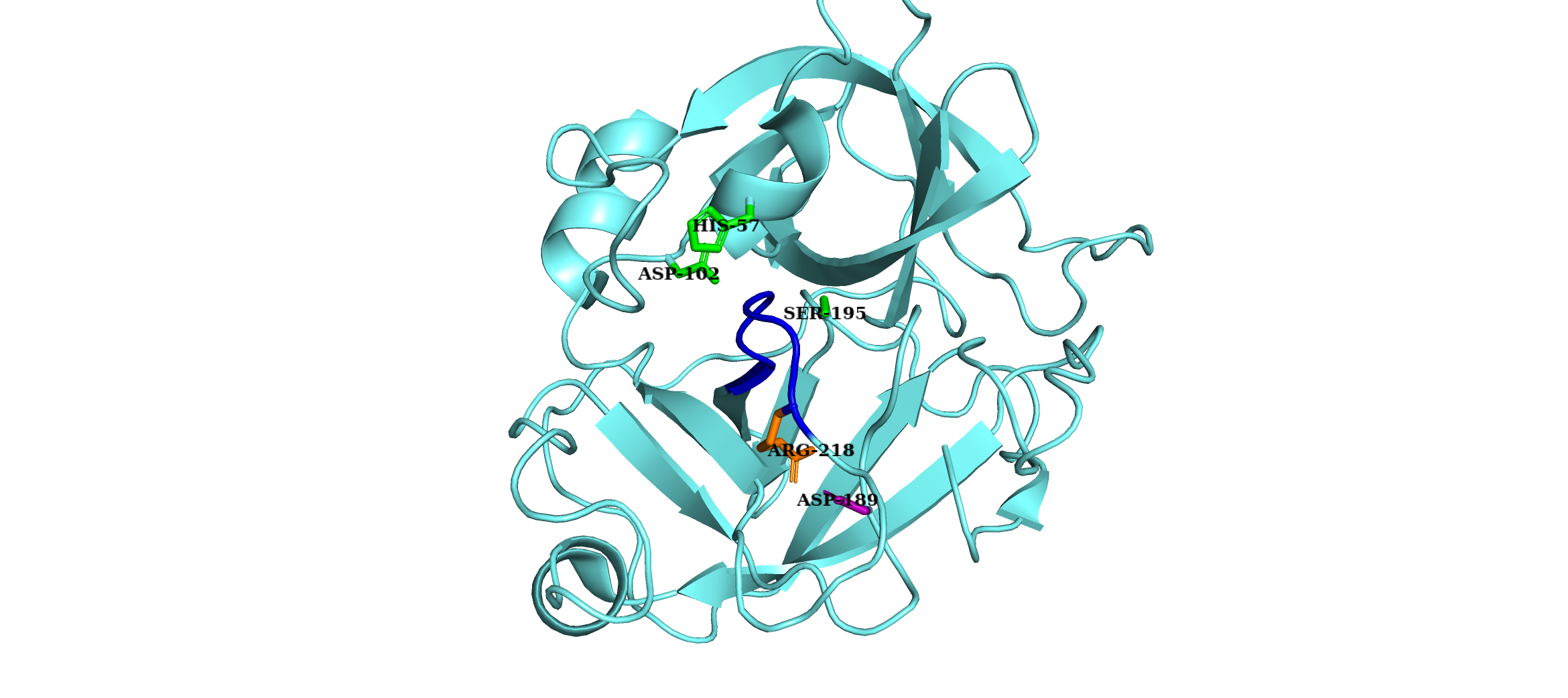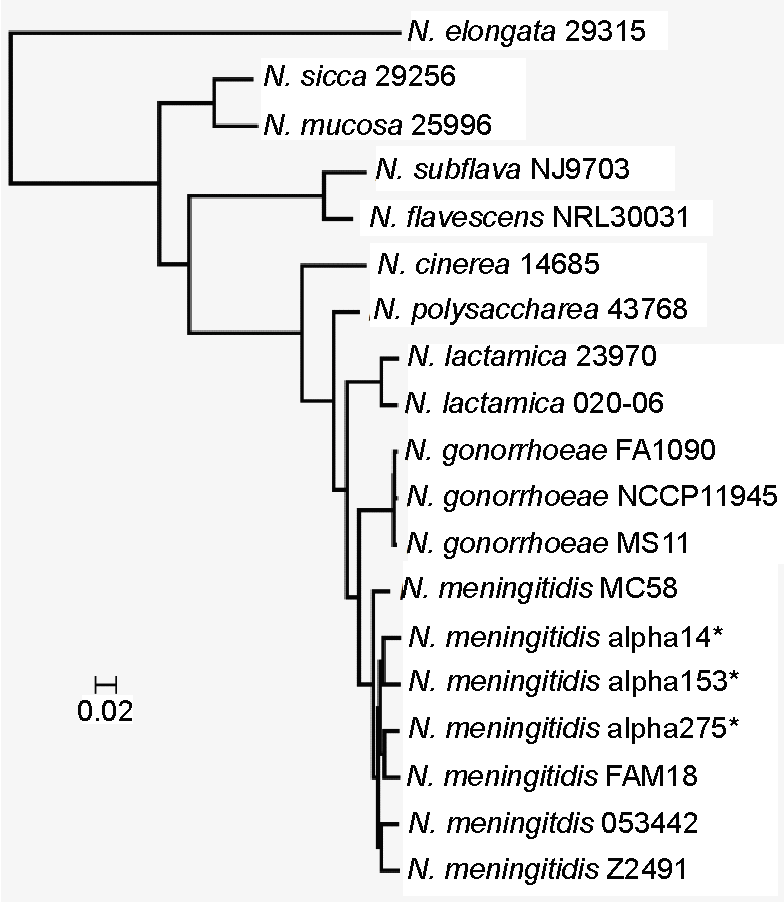|
Factor D
Factor D (, ''C3 proactivator convertase'', ''properdin factor D esterase'', ''factor D (complement)'', ''complement factor D'', ''CFD'', ''adipsin'') is a protein which in humans is encoded by the ''CFD'' gene. Factor D is involved in the alternative complement pathway of the complement system where it cleaves factor B. Function The protein encoded by this gene is a member of the trypsin family of serine proteases secreted by adipocytes into the bloodstream. The encoded protein is a component of the alternative complement pathway best known for its role in humoral suppression of infectious agents. Finally, the encoded protein has a high level of expression in fat, suggesting a role for adipose tissue in immune system biology. Factor D is a serine protease that stimulates glucose transport for triglyceride accumulation in fats cells and inhibits lipolysis. Clinical significance The level of Factor D is decreased in obese patients. This reduction may be due to high activi ... [...More Info...] [...Related Items...] OR: [Wikipedia] [Google] [Baidu] |
Protein
Proteins are large biomolecules and macromolecules that comprise one or more long chains of amino acid residues. Proteins perform a vast array of functions within organisms, including catalysing metabolic reactions, DNA replication, responding to stimuli, providing structure to cells and organisms, and transporting molecules from one location to another. Proteins differ from one another primarily in their sequence of amino acids, which is dictated by the nucleotide sequence of their genes, and which usually results in protein folding into a specific 3D structure that determines its activity. A linear chain of amino acid residues is called a polypeptide. A protein contains at least one long polypeptide. Short polypeptides, containing less than 20–30 residues, are rarely considered to be proteins and are commonly called peptides. The individual amino acid residues are bonded together by peptide bonds and adjacent amino acid residues. The sequence of amino acid resid ... [...More Info...] [...Related Items...] OR: [Wikipedia] [Google] [Baidu] |
Turn (biochemistry)
A turn is an element of secondary structure in proteins where the polypeptide chain reverses its overall direction. Definition According to one definition, a turn is a structural motif where the Cα atoms of two residues separated by a few (usually 1 to 5) peptide bonds are close (less than ). The proximity of the terminal Cα atoms often correlates with formation of an inter main chain hydrogen bond between the corresponding residues. Such hydrogen bonding is the basis for the original, perhaps better known, turn definition. In many cases, but not all, the hydrogen-bonding and Cα-distance definitions are equivalent. Types of turns Turns are classified according to the separation between the two end residues: * In an α-turn the end residues are separated by ''four'' peptide bonds (''i'' → ''i'' ± 4). * In a β-turn (the most common form), by ''three'' bonds (''i'' → ''i'' ± 3). * In a γ-turn, by ''two'' bonds (''i'' → ''i'' ± 2). ... [...More Info...] [...Related Items...] OR: [Wikipedia] [Google] [Baidu] |
Eculizumab
Eculizumab, sold under the brand name Soliris among others, is a medication used to treat paroxysmal nocturnal hemoglobinuria (PNH), atypical hemolytic uremic syndrome (aHUS), generalized myasthenia gravis, and neuromyelitis optica. In people with PNH, it reduces both the destruction of red blood cells and need for blood transfusion, but does not appear to affect the risk of death. Eculizumab was the first drug approved for each of its uses, and its approval was granted based on small trials. It is given in a clinic by intravenous (IV) infusion. Side effects include a risk for meningococcal infections and it is only prescribed to those who have enrolled in and follow a risk evaluation and mitigation strategy, which involves counseling people and ensuring that they are vaccinated. It is a humanized monoclonal antibody functioning as a terminal complement inhibitor. It has been developed, manufactured, and marketed by Alexion Pharmaceuticals, which had patent exclusivity un ... [...More Info...] [...Related Items...] OR: [Wikipedia] [Google] [Baidu] |
Paroxysmal Nocturnal Hemoglobinuria
Paroxysmal nocturnal hemoglobinuria (PNH) is a rare, acquired, life-threatening disease of the blood characterized by destruction of red blood cells by the complement system, a part of the body's innate immune system. This destructive process occurs due to deficiency of the red blood cell surface protein DAF, which normally inhibits such immune reactions. Since the complement cascade attacks the red blood cells within the blood vessels of the circulatory system, the red blood cell destruction (hemolysis) is considered an ''intravascular'' hemolytic anemia. Other key features of the disease, such as the high incidence of venous blood clot formation, are incompletely understood. PNH is the only hemolytic anemia caused by an ''acquired'' (rather than inherited) intrinsic defect in the cell membrane (deficiency of glycophosphatidylinositol or GPI) leading to the absence of protective exterior surface proteins that normally attach via a GPI anchor. It may develop on its own ("primary ... [...More Info...] [...Related Items...] OR: [Wikipedia] [Google] [Baidu] |
Neisseria
''Neisseria'' is a large genus of bacteria that colonize the mucosal surfaces of many animals. Of the 11 species that colonize humans, only two are pathogens, ''N. meningitidis'' and '' N. gonorrhoeae''. ''Neisseria'' species are Gram-negative bacteria included among the Pseudomonadota, a large group of Gram-negative forms. ''Neisseria'' diplococci resemble coffee beans when viewed microscopically. Pathogenesis and classification Pathogens Species of this genus (family Neisseriaceae) of parasitic bacteria grow in pairs and occasionally tetrads, and thrive best at 98.6 °F (37 °C) in the animal body or serum media. The genus includes: * '' N. gonorrhoeae'' (also called the gonococcus) causes gonorrhea. * ''N. meningitidis'' (also called the meningococcus) is one of the most common causes of bacterial meningitis and the causative agent of meningococcal septicaemia. These two species have the ability of 'breaching' the barrier. Local cytokines of the area become sec ... [...More Info...] [...Related Items...] OR: [Wikipedia] [Google] [Baidu] |
Proximal Tubules
The proximal tubule is the segment of the nephron in kidneys which begins from the renal pole of the Bowman's capsule to the beginning of loop of Henle. It can be further classified into the proximal convoluted tubule (PCT) and the proximal straight tubule (PST). Structure The most distinctive characteristic of the proximal tubule is its luminal brush border. Brush border cell The luminal surface of the epithelial cells of this segment of the nephron is covered with densely packed microvilli forming a border readily visible under the light microscope giving the brush border cell its name. The microvilli greatly increase the luminal surface area of the cells, presumably facilitating their reabsorptive function as well as putative flow sensing within the lumen. The cytoplasm of the cells is densely packed with mitochondria, which are largely found in the basal region within the infoldings of the basal plasma membrane. The high quantity of mitochondria gives the cells an ... [...More Info...] [...Related Items...] OR: [Wikipedia] [Google] [Baidu] |
Factor D Canonical Configuration
Factor, a Latin word meaning "who/which acts", may refer to: Commerce * Factor (agent), a person who acts for, notably a mercantile and colonial agent * Factor (Scotland), a person or firm managing a Scottish estate * Factors of production, such a factor is a resource used in the production of goods and services Science and technology Biology * Coagulation factors, substances essential for blood coagulation * Environmental factor, any abiotic or biotic factor that affects life * Enzyme, proteins that catalyze chemical reactions * Factor B, and factor D, peptides involved in the alternate pathway of immune system complement activation * Transcription factor, a protein that binds to specific DNA sequences Computer science and information technology * Factor (programming language), a concatenative stack-oriented programming language * Factor (Unix), a utility for factoring an integer into its prime factors * Factor, a substring, a subsequence of consecutive symbols in a str ... [...More Info...] [...Related Items...] OR: [Wikipedia] [Google] [Baidu] |
C3-convertase
C3 convertase (''C4bC2b'', formerly ''C4b2a'') belongs to family of serine proteases and is necessary in innate immunity as a part of the complement system which eventuate in opsonisation of particles, release of inflammatory peptides, C5 convertase formation and cell lysis. C3 convertase can be used to refer to the form produced in the alternative pathway (C3bBb) or the classical and lectin pathways (C4bC2b, formerly C4b2a). Once formed, both C3 convertases will catalyze the proteolytic cleavage of C3 into C3a and C3b (hence the name "C3-convertase"). The smaller fragment called C3a serves to increase vascular permeability and promote extravasation of phagocytes, while the larger C3b fragment can be used as an opsonin or bind to either type of C3 convertase to form the trimolecular C5 convertase to activate C5 for the membrane attack complex. Formation C3 convertase formation can occur in three different pathways: the classical, lectin, and alternative pathways. Al ... [...More Info...] [...Related Items...] OR: [Wikipedia] [Google] [Baidu] |
Scissile Bond
In molecular biology, a scissile bond is a covalent chemical bond that can be broken by an enzyme. Examples would be the cleaved bond in the self-cleaving hammerhead ribozyme or the peptide bond In organic chemistry, a peptide bond is an amide type of covalent chemical bond linking two consecutive alpha-amino acids from C1 (carbon number one) of one alpha-amino acid and N2 ( nitrogen number two) of another, along a peptide or protein c ... of a substrate cleaved by a peptidase. References {{Reflist Enzymes Molecular biology Chemical bonding ... [...More Info...] [...Related Items...] OR: [Wikipedia] [Google] [Baidu] |
Beta Barrel
In protein structures, a beta barrel is a beta sheet composed of tandem repeats that twists and coils to form a closed toroidal structure in which the first strand is bonded to the last strand (hydrogen bond). Beta-strands in many beta-barrels are arranged in an antiparallel fashion. Beta barrel structures are named for resemblance to the barrels used to contain liquids. Most of them are water-soluble proteins and frequently bind hydrophobic ligands in the barrel center, as in lipocalins. Others span cell membranes and are commonly found in porins. Porin-like barrel structures are encoded by as many as 2–3% of the genes in Gram-negative bacteria. It has been shown that more than 600 proteins with various function (e.g., oxidase, dismutase, amylase) contain the beta barrel structure. In many cases, the strands contain alternating polar and non-polar (hydrophilic and hydrophobic) amino acids, so that the hydrophobic residues are oriented into the interior of the barrel to form a ... [...More Info...] [...Related Items...] OR: [Wikipedia] [Google] [Baidu] |
Gene
In biology, the word gene (from , ; "... Wilhelm Johannsen coined the word gene to describe the Mendelian units of heredity..." meaning ''generation'' or ''birth'' or ''gender'') can have several different meanings. The Mendelian gene is a basic unit of heredity and the molecular gene is a sequence of nucleotides in DNA that is transcribed to produce a functional RNA. There are two types of molecular genes: protein-coding genes and noncoding genes. During gene expression, the DNA is first copied into RNA. The RNA can be directly functional or be the intermediate template for a protein that performs a function. The transmission of genes to an organism's offspring is the basis of the inheritance of phenotypic traits. These genes make up different DNA sequences called genotypes. Genotypes along with environmental and developmental factors determine what the phenotypes will be. Most biological traits are under the influence of polygenes (many different genes) as well as g ... [...More Info...] [...Related Items...] OR: [Wikipedia] [Google] [Baidu] |





